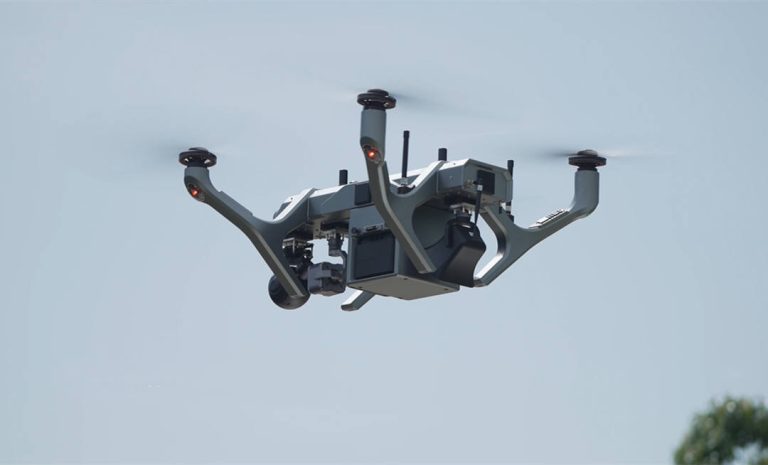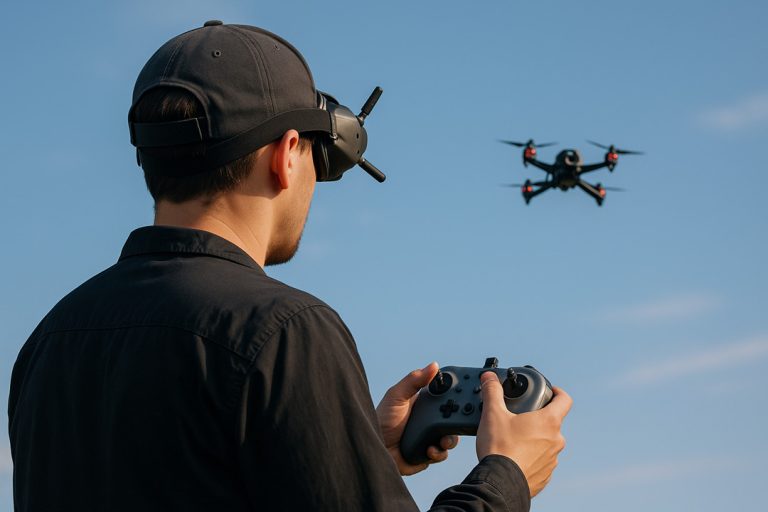How Much Weight Can a Drone Carry? (Comprehensive 2025 Guide)
How much weight can a drone fly?
Here is the answer:
- Physically, consumer drones can carry 0.2 kg to 2 kg (0.4–5.5 lbs), while heavy-lift models like the CW-80E handle up to 25 kg (55 lbs). Industrial giants like the Griff 300 lift over 500 kg (1,100 lbs).
- Legally, the FAA limits commercial drones to 25 kg (55 lbs) under Part 107 rules. In the EU, drones over 250g require certifications, with fines or crashes likely if exceeded.
So, "how much weight can a drone carry?" depends on the drone type and your location. But that’s not all—weather, battery life, motor strength, and flight time also play a role.
In this guide, we’ll break down everything you need to know about drone payload capacity, covering the key factors that affect how much a drone can lift, how to calculate it correctly, and the legal limits you need to consider.
Let's dive in!
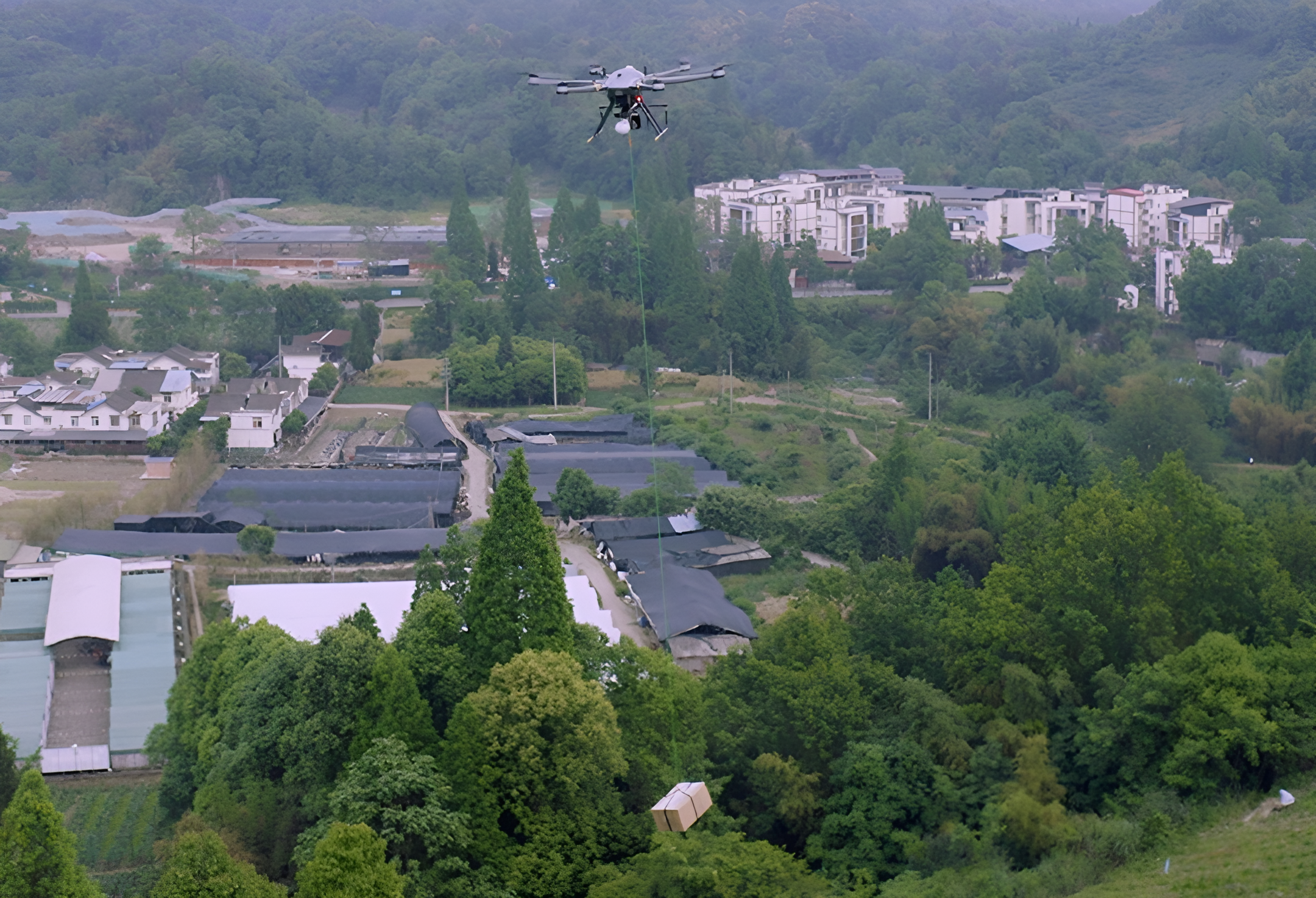
What is Payload Capcity?
Drone payload capacity is simply the extra weight a drone can lift—not counting its own frame, battery, or built-in gear. Think of it as your drone’s "cargo allowance," the limit that tells you whether it can haul a camera, a package, or a specialized sensor without struggling.
This is different from the maximum takeoff weight (MTOW), which is the total weight—drone plus battery plus payload. So if a drone weighs 4 lb and its MTOW is 10 lb, you have 6 lb of lifting capacity. Never push past that limit.
Why it matters:
- Stability: Overloading throws off the drone’s balance, leading to shaky flight or even a crash.
- Endurance: Heavier loads make motors draw more power, cutting flight time—sometimes in half.
- Safety & Compliance: Exceeding your payload capacity can overheat motors, void warranties, and even violate regulations.
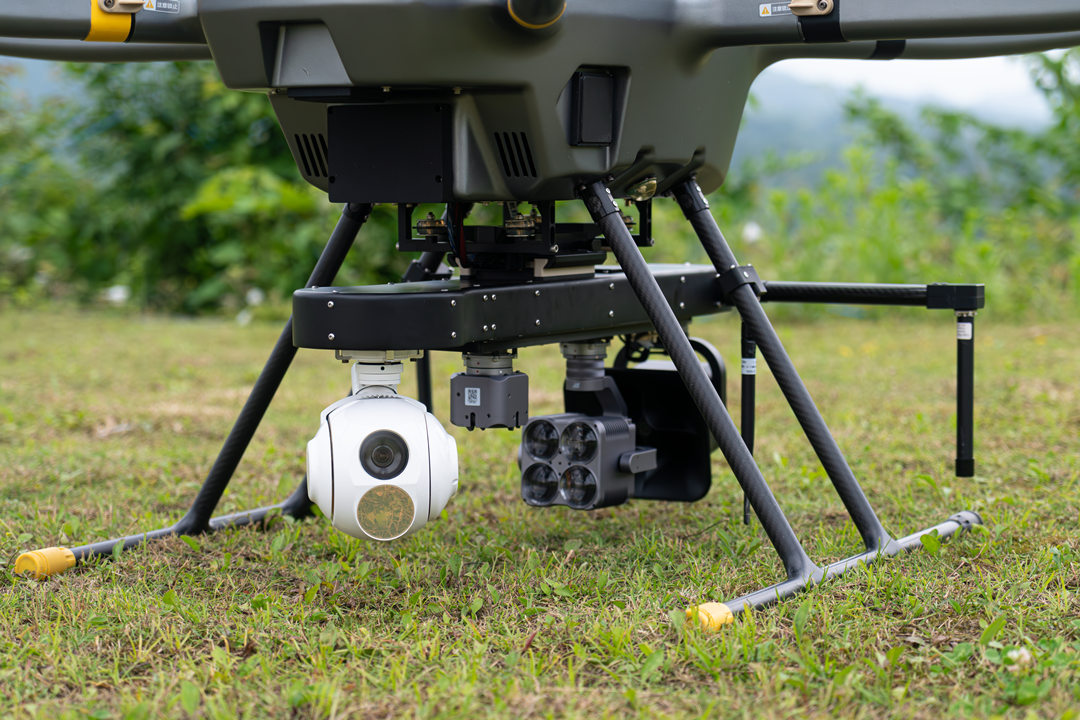
Key Factors Affecting Payload
A drone’s ability to lift weight isn’t just about raw power—it’s a delicate balance of engineering, environmental conditions, and regulatory constraints.
Motor Power & Propeller Design
The thrust-to-weight ratio is the cornerstone of payload capacity. High-torque motors paired with large, aerodynamically optimized propellers generate more lift.
For example, heavy-lift drones like the FreeFly Alta X use 12-inch carbon fiber propellers and a 1.38 kW heavy-lift drone motor to haul 35 lbs, while toy drones rely on smaller, less efficient plastic props and lower-power motors.
Brushless motors outperform brushed ones in both power and durability, but they also consume more energy. A general rule: Total thrust should be at least twice the combined weight of the drone and payload for stable flight.
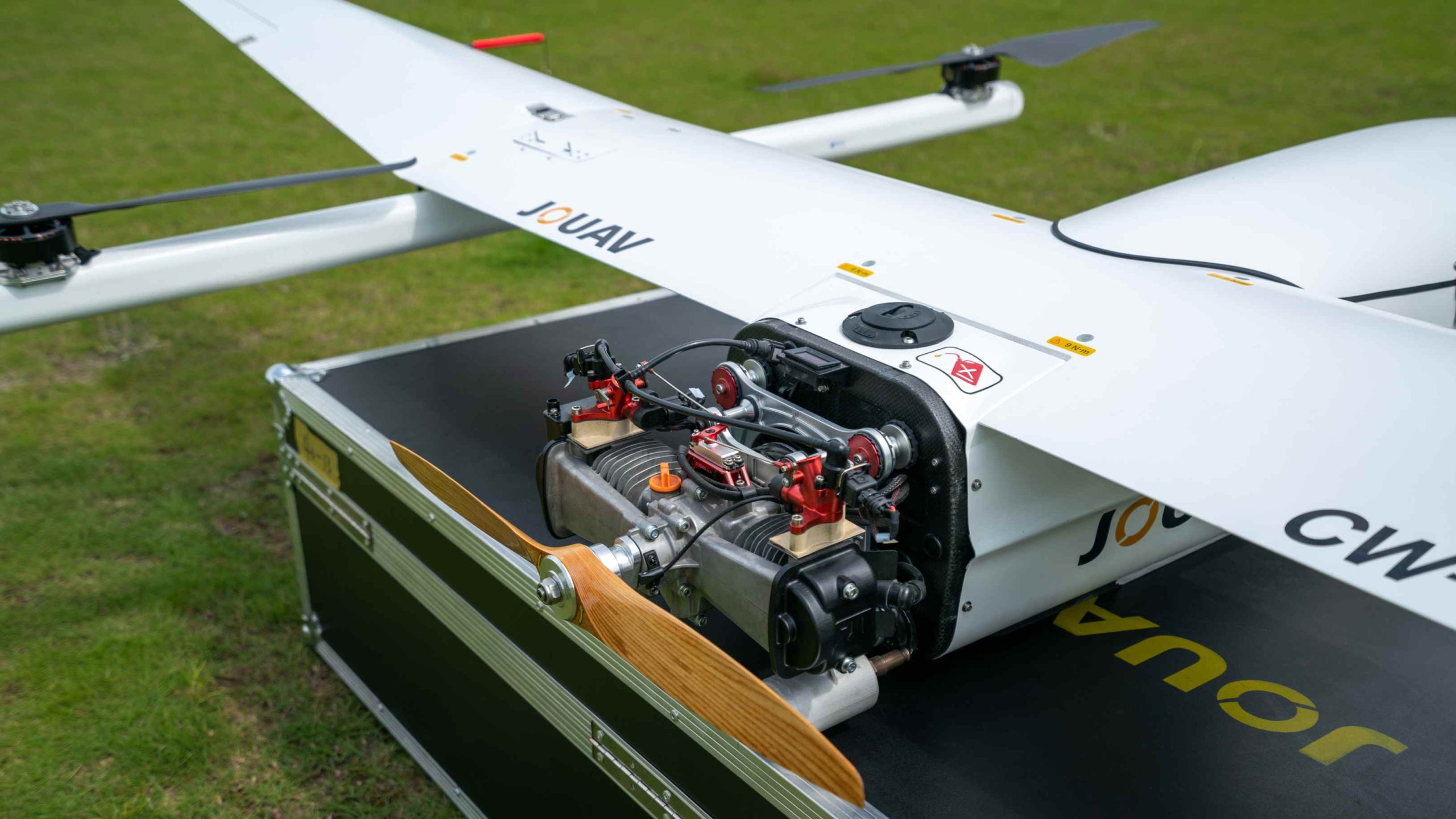
Battery Capacity & Efficiency
Battery life plummets under heavy loads. Lithium-polymer (LiPo) batteries are industry standards, but their energy density limits flight time.
For instance, a drone rated to carry 5 lbs might see a 40–50% reduction in flight time compared to unloaded flights.
Emerging tech like solid-state batteries (2x energy density) and hydrogen fuel cells (used in the JOUAV CW-25H) promise longer endurance, but most consumer drones still rely on traditional packs. Always calculate battery drain using the formula:
Flight Time (mins) = (Battery Capacity / Power Draw) × 60
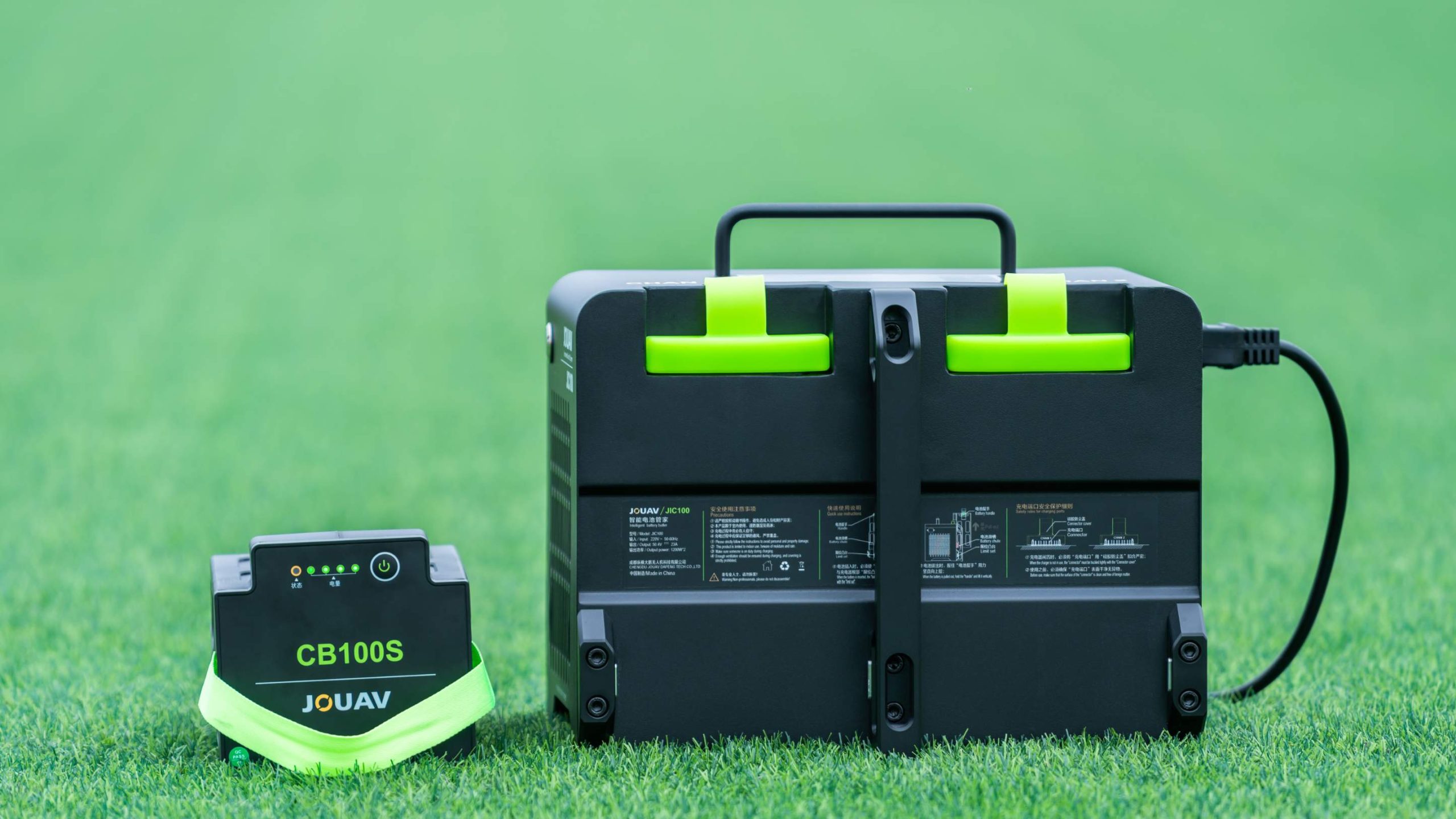
Frame Material & Structural Design
A lightweight yet durable frame maximizes payload potential. Carbon fiber strikes the best balance, offering strength without added mass (used in all JOUAV CW Series drones), while plastic or aluminum frames add unnecessary weight.
Structural design also matters: asymmetrical payloads require reinforced arms, and modular frames allow customization for heavy gear.
Environmental Conditions
- Altitude: Thin air at high elevations reduces propeller efficiency. A drone that lifts 10 lbs at sea level might manage only 7 lbs at 10,000 feet.
- Wind: Gusts force motors to work harder, cutting effective payload by 15–20%.
- Temperature: Cold weather saps battery performance, while heat can warp plastic components.
How Much Can a Drone Carry Based on Its Use Cases?
Drone lifting capacity varies significantly based on design, purpose, and power. From featherweight toy drones to heavy-lift military UAVs, each category is built to meet specific operational needs.
Here's a clear comparison table:
| Drone Type | Payload Range | Typical Payloads | Typical Uses |
| Toy Drones | Less than 0.5 kg (1.1 lbs) | Tiny cameras, LED lights | Indoor flying fun, holiday props, and education |
| FPV/Racing Drones | 0.2–2 kg (0.4–4.4 lbs) | FPV camera, HD action cam | Drone racing, freestyle stunts, FPV filming |
| Hobbyist Drones | 0.2–2 kg (0.4–4.4 lbs) | Action cameras, small gimbals, lights | Aerial photography, basic surveying, visual inspections |
| Photography Drones | 1–9 kg (2.2–19.9 lbs) | Mirrorless/DSLR cameras, cinema rigs, gimbals | Film production, high-end |
| Commercial Drones | 2–10 kg (2.2–22 lbs) | LiDAR, multispectral sensors, dual payloads | Mapping, 3D modeling, power line |
| Agricultural Drones | 10–50+ kg (22–110.2 lbs+) | Liquid tanks (pesticides/fertilizers), seed spreaders | Crop spraying, seeding, orchard management |
| Delivery Drones | 30+ kg (66.1 lbs) | Packages, medicine, tools | Last-mile delivery, medical supply transport, logistics in remote areas |
| Military Drones | 1–500+ kg | Cameras, radar, missiles, cargo pods | Surveillance, tactical strikes, battlefield logistics |
Toy Drones
Toy drones are small, lightweight, and inexpensive, mainly used indoors or for learning purposes.
They typically weigh less than 0.5 kg (about 1.1 lbs) at most and offer almost no meaningful payload capacity.
In practice, they can carry just a few grams—maybe a tiny LED light or a micro camera—but even that can significantly reduce their flight time and stability.
These drones usually fly for only a few minutes, and adding weight often makes them unstable or grounds them altogether.
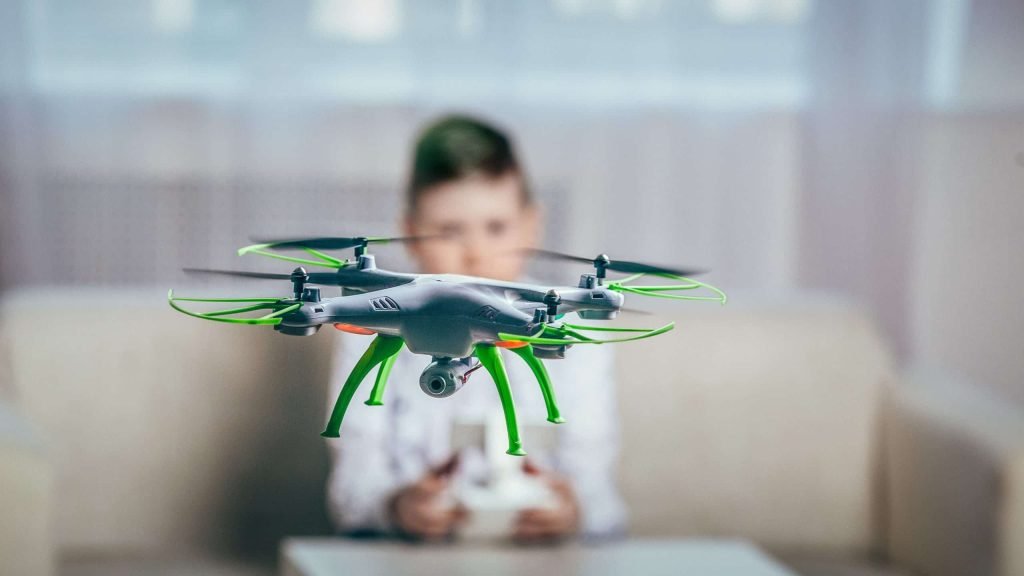
Racing and FPV Drones
First-Person View (FPV) and racing drones are built for speed, agility, and competitive performance, not for lifting payloads. These drones usually carry only what is absolutely necessary: a lightweight FPV camera and, in some cases, a small action camera for recording.
Payload capacity is typically limited to 0.2-2 kg (0.4-4.4 lbs). A typical 5″ FPV quadcopter (battery installed) might weigh ~0.6–0.8 kg, leaving only ~0.1–0.3 kg spare for extra gear. Some large "long-range" or cinematic FPV rigs (7–10″ props) can handle ~1–2 kg in total, but that’s exceptional.
Adding even moderate weight can drastically reduce performance, limiting acceleration and maneuverability. For this reason, racing pilots strive to keep these drones as light as possible.
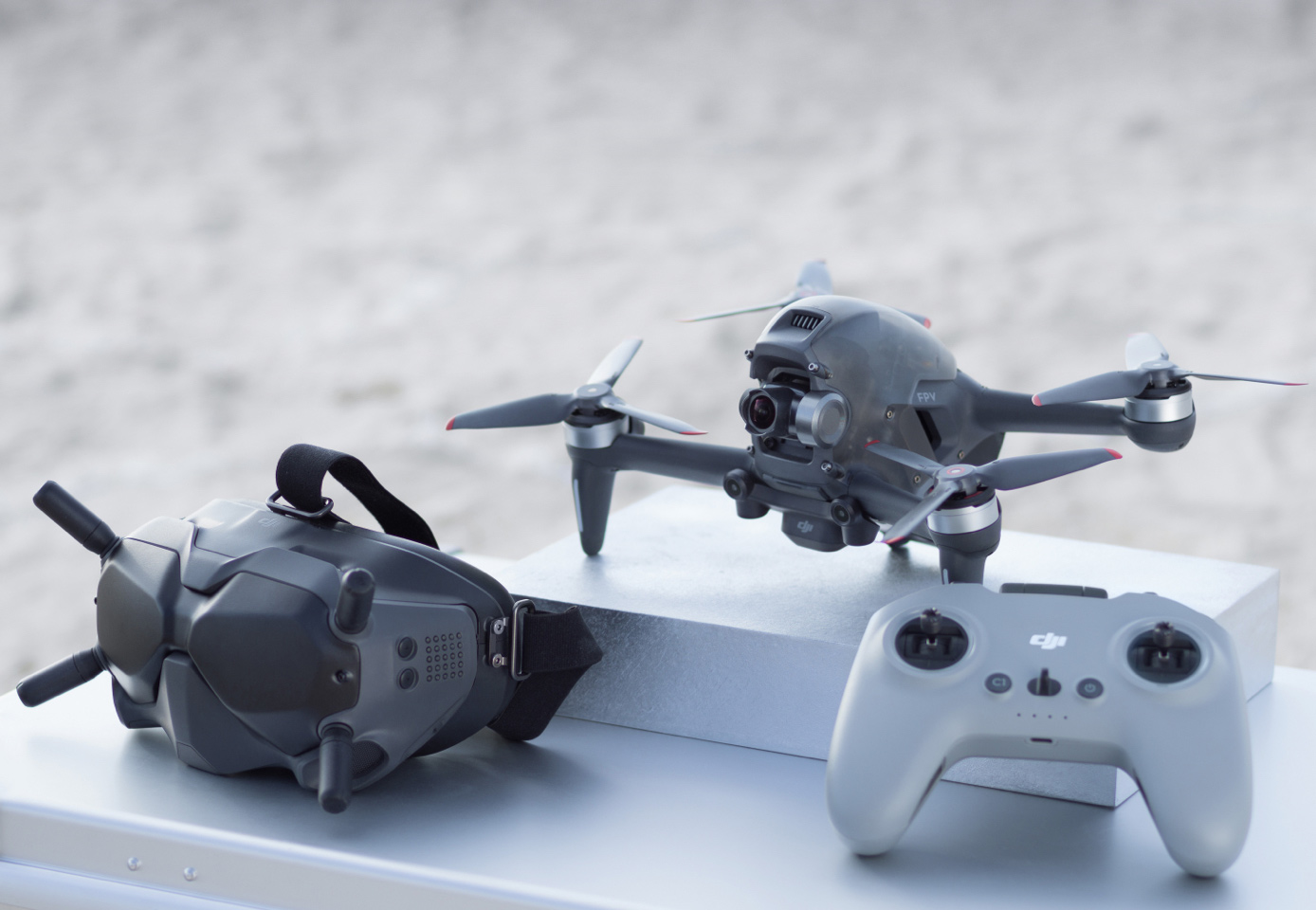
Hobbyist and Consumer Drones
Consumer drones are larger and more capable, often used by hobbyists for casual photography or recreational flying.
Payload capacity typically ranges from 0.2 grams to 2kg (about 0.4-4.4 lbs). Basic camera drones might carry lightweight action cameras or small gimbals, while more advanced models like the DJI Mavic or Phantom series can approach 1-2kg.
Still, even with these drones, additional weight shortens flight time. A 500-gram increase, for example, can reduce endurance by up to 20%, and any added equipment must be balanced to avoid destabilizing the flight.
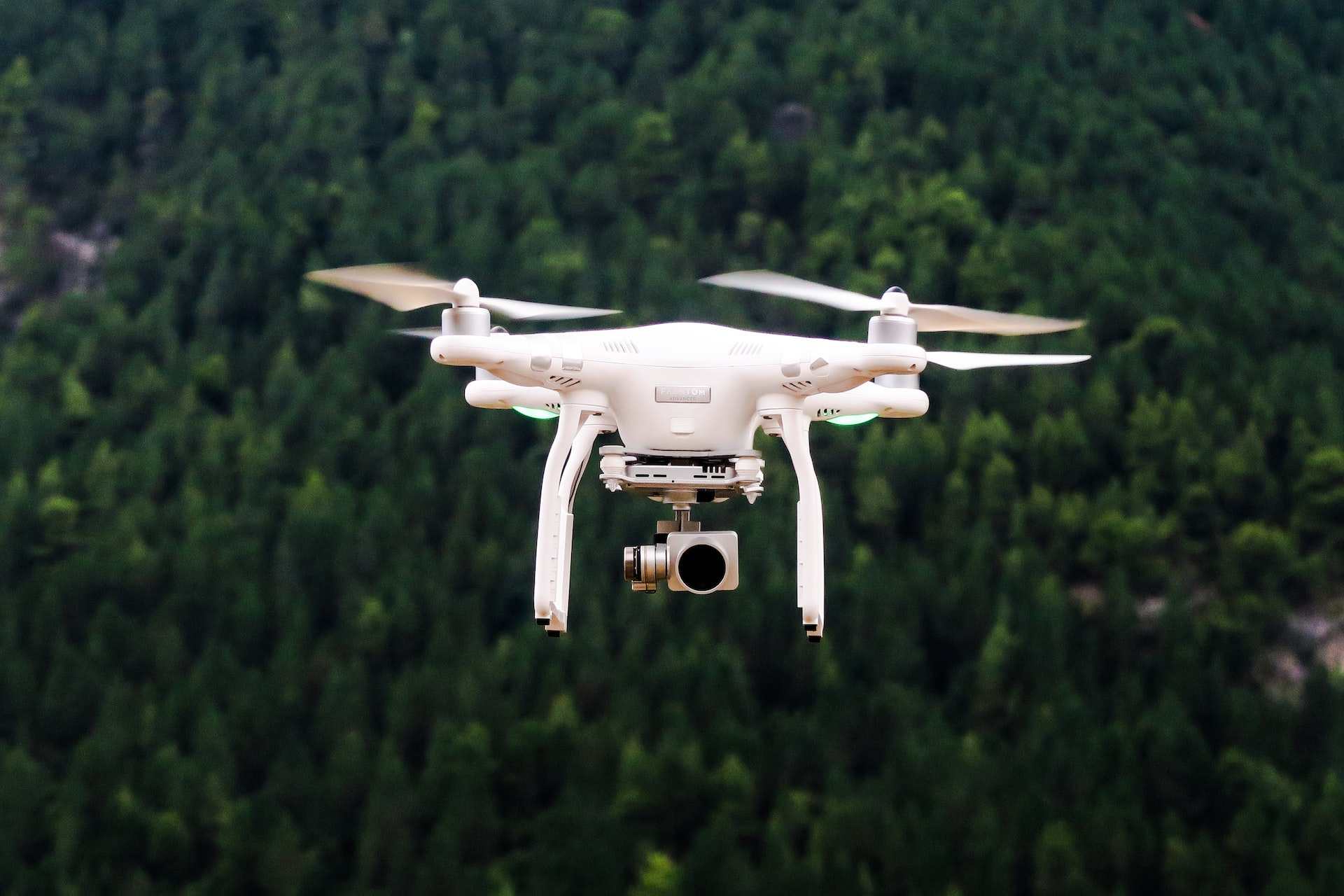
Photography and Cinematography Drones
Drones designed for aerial imaging—whether for professional photography, videography, or filmmaking—are built with payload in mind.
Entry-level models may carry a small gimbal and camera weighing under 1kg (2.2 lbs), while professional rigs like the Freefly Alta 8 can support payloads of up to 9kg (19.8 lbs), including cinema-grade cameras such as RED or Arri systems.
These drones often carry not only cameras but also gimbals, lenses, and backup sensors. However, the higher the payload, the shorter the flight time. Heavy-lift drones may remain airborne for only 10 to 15 minutes when fully loaded.
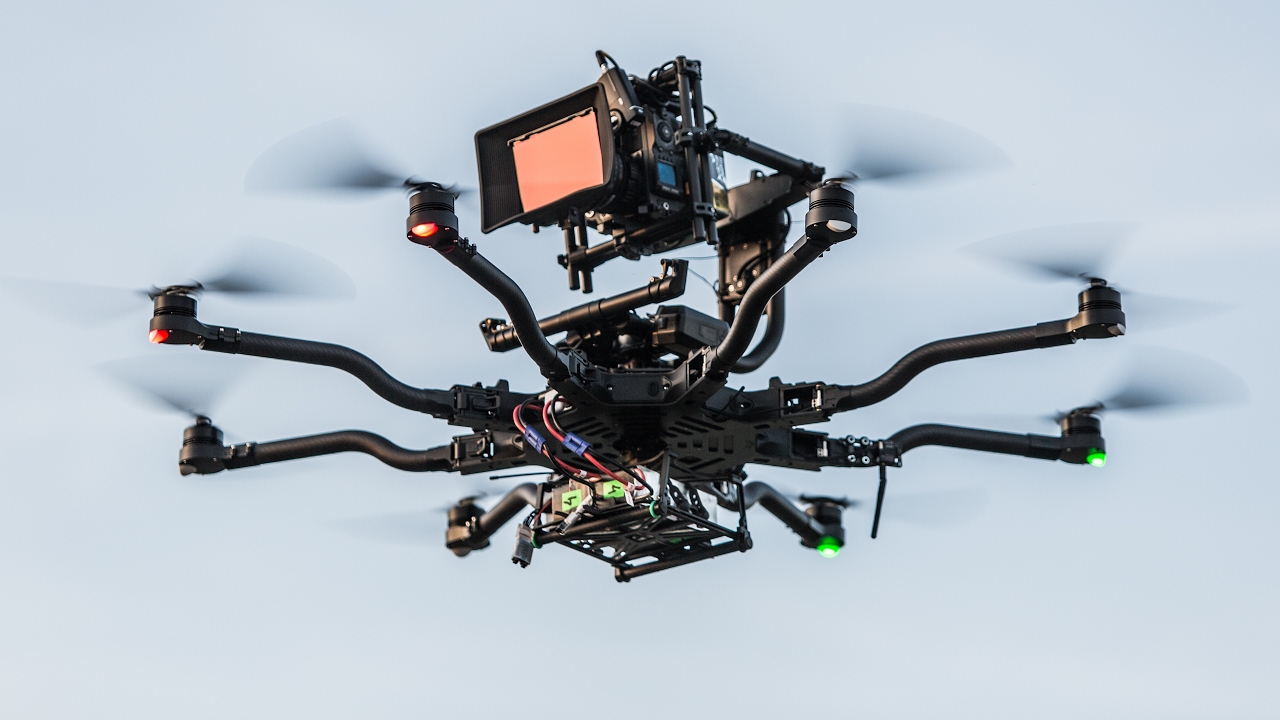
Commercial and Enterprise Drones
Used in industries like surveying, mapping, inspection, and public safety, commercial drones are built to carry a variety of payloads such as LiDAR units, multispectral cameras, thermal sensors, or even multiple sensors at once.
Their payload capacities range from about 2 to 10 kilograms (2.2-22 lbs). A common example is the JOUAV CW-15 VTOL drone, which can carry around 3 kg.
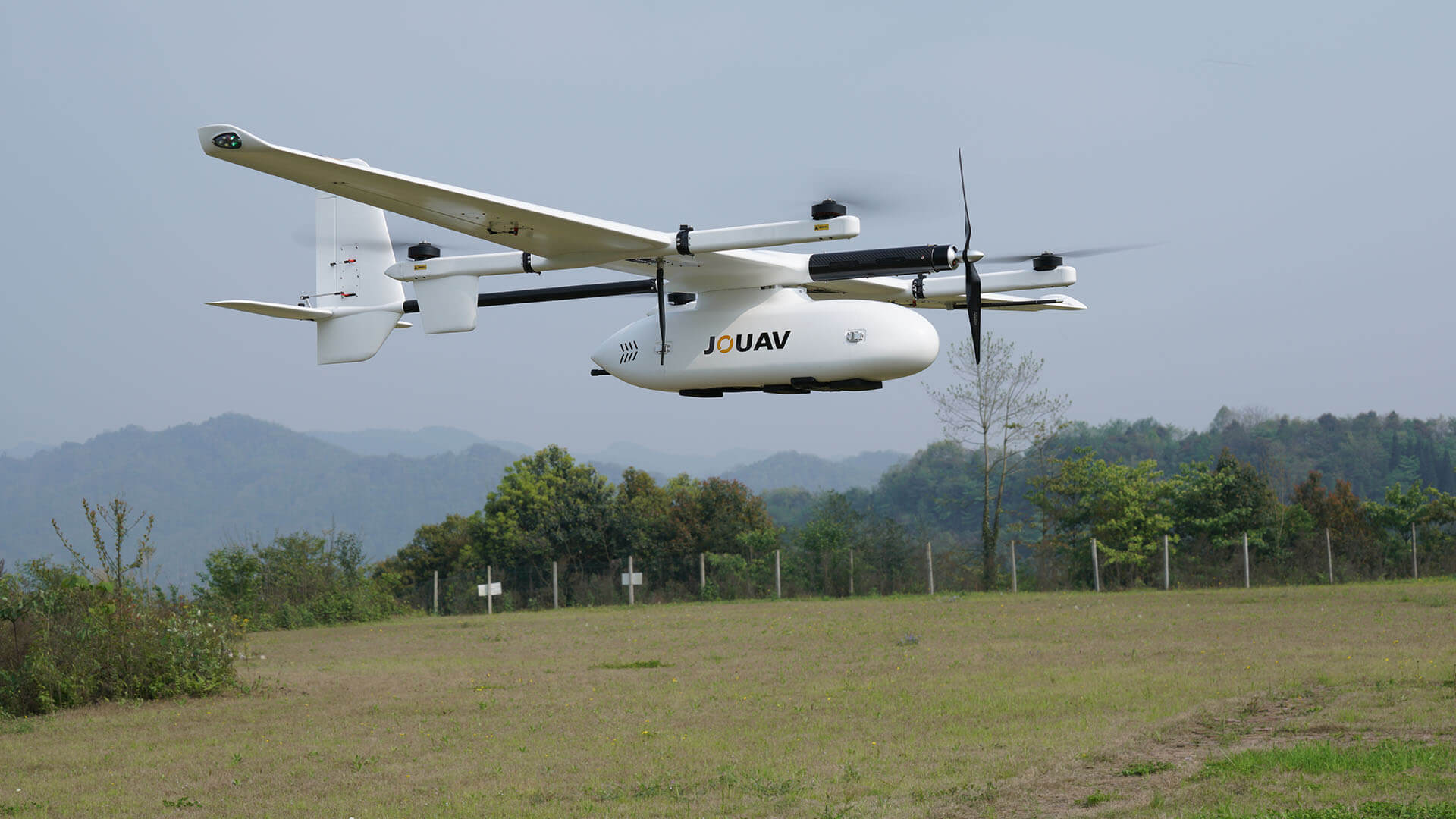
These drones are designed to balance power, flight stability, and flexibility, although adding weight still reduces flight time and demands more from the motors and battery systems.
Agricultural Drone
Agricultural drones are engineered for high-lift capacity to carry liquids or granules for spraying and seeding. Payload capacities can range from 10 kg to over 50 kg (22-110.2 lbs).
A typical example is the DJI Agras T40, which holds 40 liters of liquid—about 40 kg—and offers a spreader attachment capable of lifting 50 kg of dry material.
These drones must manage both the heavy payload and the shifting weight as the liquid is dispensed.
The flight time is usually short—often around 10 to 15 minutes on a full tank—requiring frequent returns to recharge or refill.
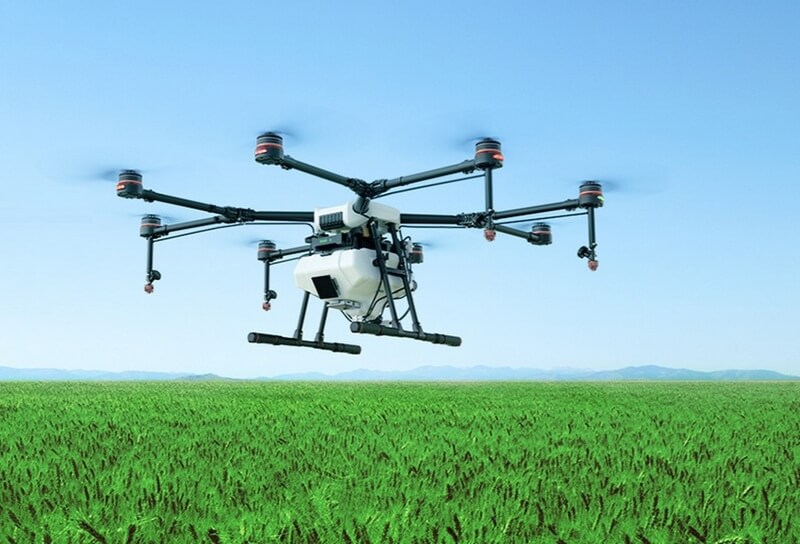
Delivery Drones
The range of delivery drones varies widely. Small delivery drones, like those used for medical or food delivery, typically carry between 1 and 5 kilograms.
Larger cargo drones designed for industrial logistics can handle up to 30 kg (66.1 lbs) or more. For example, DJI’s FlyCart 30 can transport up to 30 kg of cargo.
Payloads include consumer goods, equipment, medical kits, and other light freight. As with other drones, the heavier the payload, the shorter the range and flight time.
Logistics planning for these drones must account for the tradeoff between capacity and endurance.
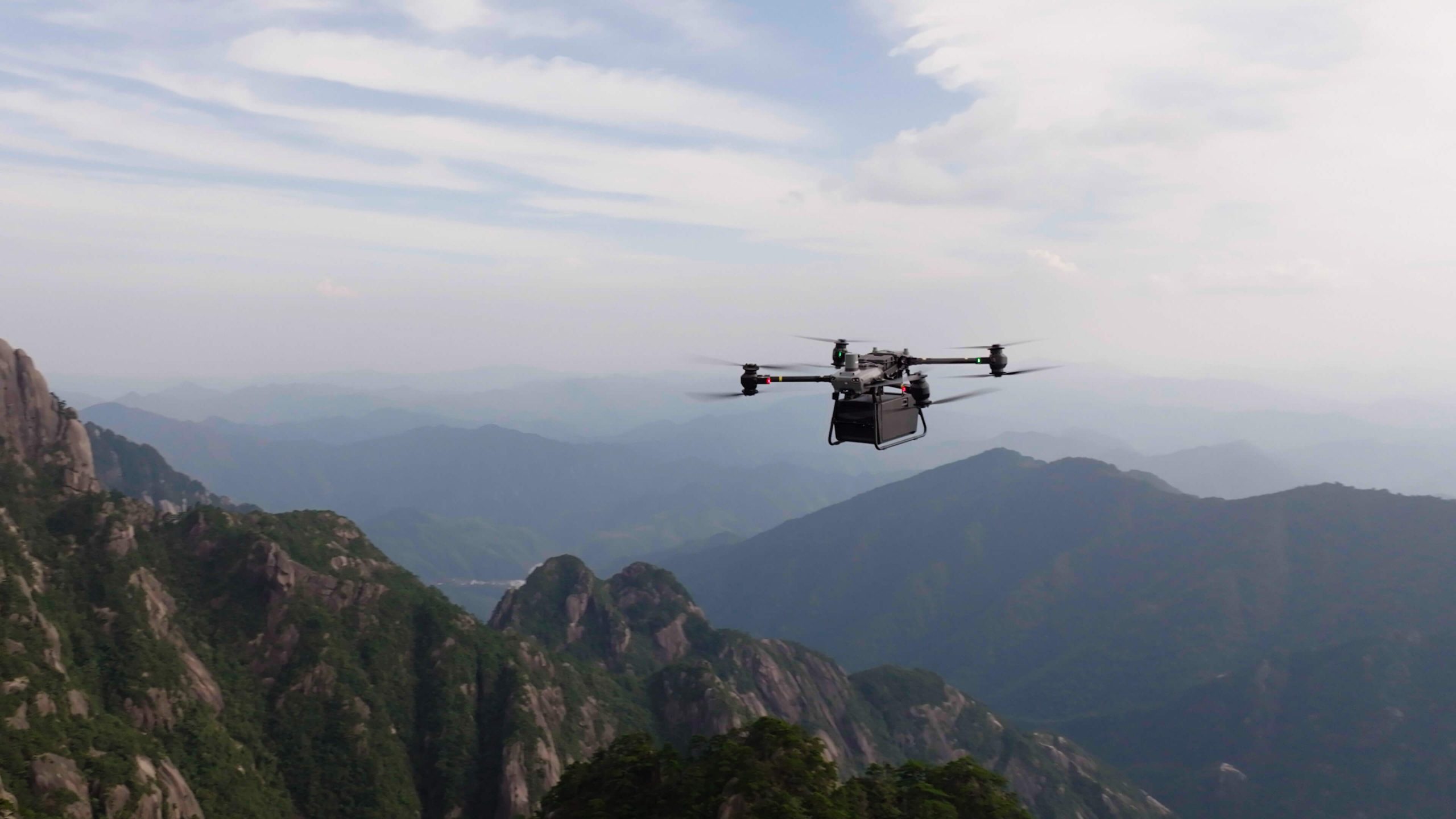
Military Drones
Military drones encompass the widest payload range, from small tactical UAVs with a few kilograms of sensors to large combat and reconnaissance aircraft carrying 1-500kg (1-1102.3 lbs) and more.
Some, like the MQ-9 Reaper, are equipped with multiple missiles, cameras, and radar systems.
These UAVs often operate at high altitudes and for long durations, requiring turbine engines rather than batteries.
While they are designed for heavy loads, every additional kilogram reduces altitude, maneuverability, and operational range.
Nonetheless, these drones are among the most powerful aerial platforms available today.
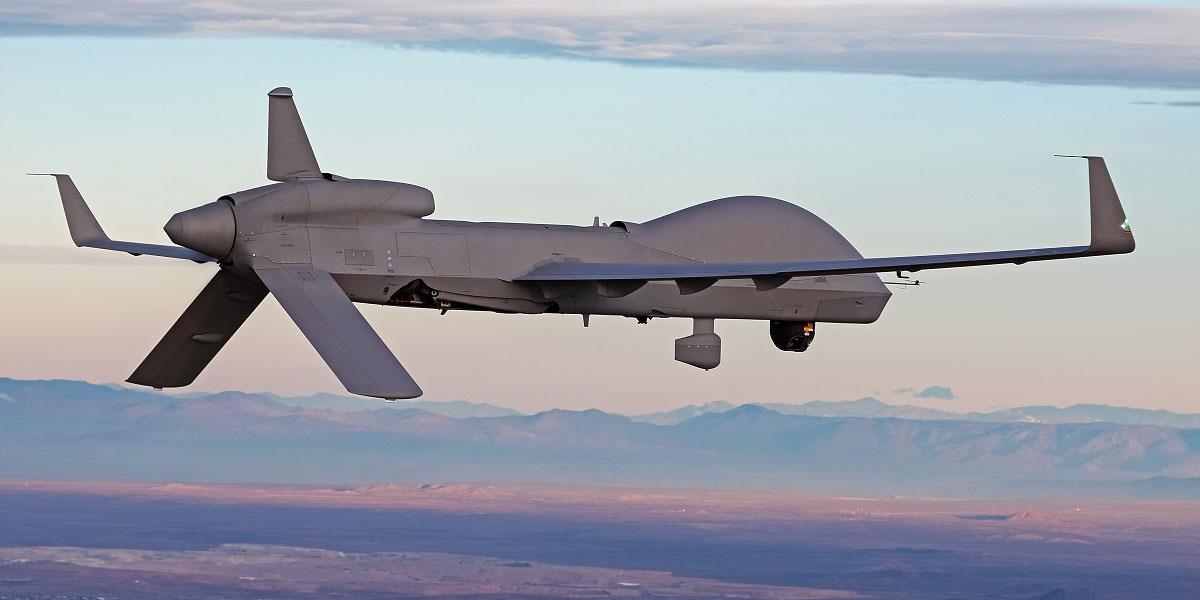
How Much Weight Can a Drone Carry Based on Its Size?
Drones fall into three broad size categories—small, medium, and large/heavy-lift—each offering distinct payload capacities suited to different applications.
| Category | Size | Payload Capacity | Typical Uses |
| Small Drones | <12 in (30 cm) | 0.45–2 kg (1–4.4 lb) | Recreational photo/video, Inspections & surveying |
| Medium Drones | 12–24 in (30–60 cm) | 1–5 kg (2–11 lb) (some up to 10 kg) | Cinematography, Precision, agriculture, Infrastructure inspection, 3D mapping, Public safety |
| Large/Heavy-Lift | >24 in (60 cm) | 5–30 kg (11–66.1 lb) (heavy-lift: 20–200 + kg) | Remote-site cargo transport, Heavy-duty aerial imaging, Ag spraying, Emergency relief deliveries |
Small/Mini Drones
By physical dimension, small drones measure under 12 inches (30 cm) across and generally lift up to about 0.45 kg (1 lb). In practice, hobby-grade models in this group carry 100 g to 500 g, while advanced consumer drones can stretch to 1 kg—or, in some cases, as much as 2 kg.
These compact platforms excel at enhanced recreational photography and videography, and—when equipped with lightweight sensors—can tackle basic surveying or inspection tasks.
Their modest drone payload capacity makes them highly portable and ideal for enthusiasts and light commercial users alike.
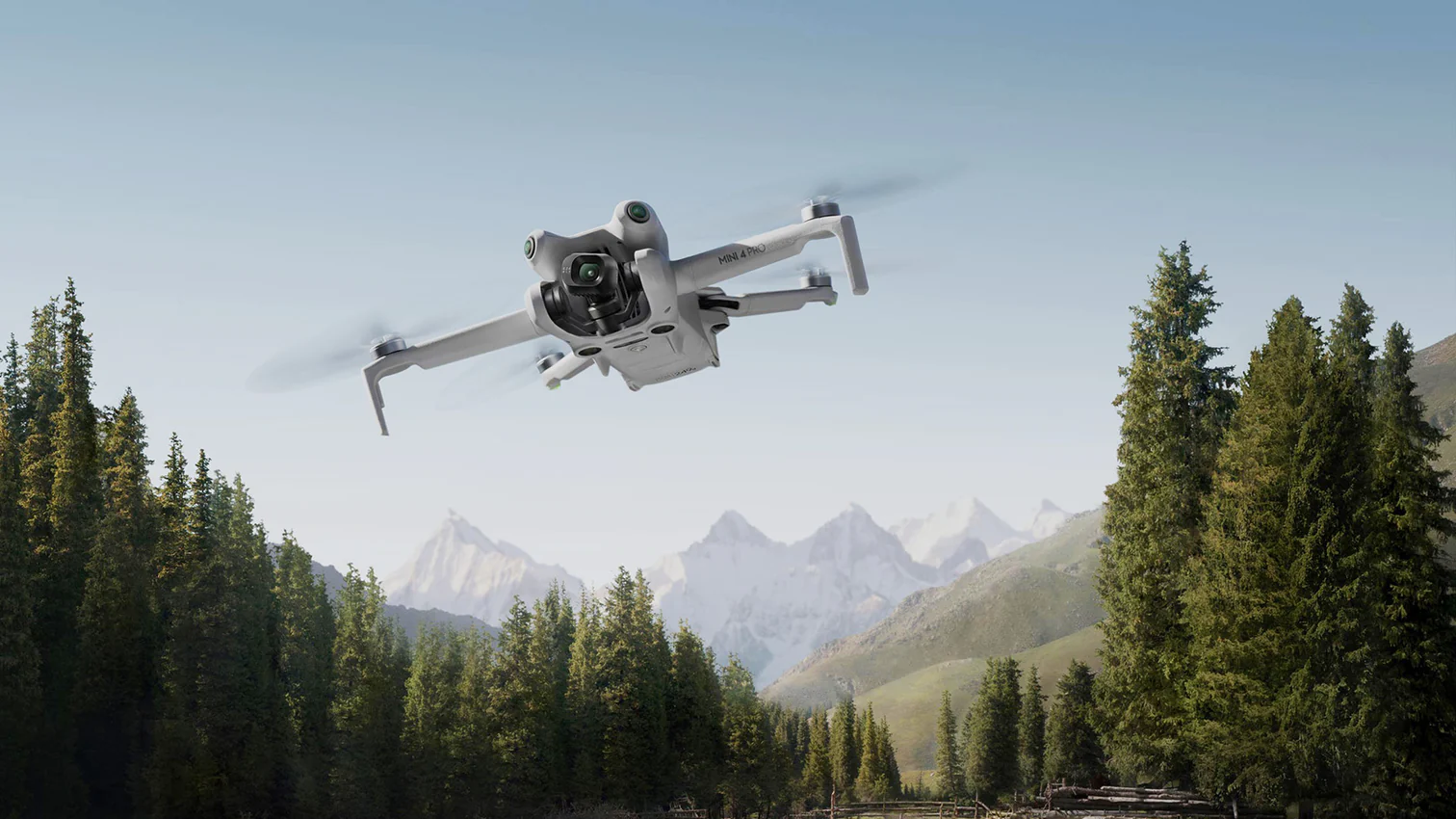
Medium-Sized Drones
Medium-sized drones bridge the gap between consumer toys and industrial workhorses. Typically measuring 12–24 inches (30–60 cm) and rated for 1–5 kg (2.2–11 lbs) of payload, they often overlap with the "commercial drone" label.
Some frameworks push that upper limit to 4.5 kg or even 10 kg, but most professional multicopters in this class carry 1–5 kg of cameras, LiDAR units, multispectral sensors, or small delivery packages.
Thanks to their balance of size, flight time, and lifting power, medium drones are indispensable in sectors like cinematography, precision agriculture, infrastructure inspection, 3D mapping, and public safety.
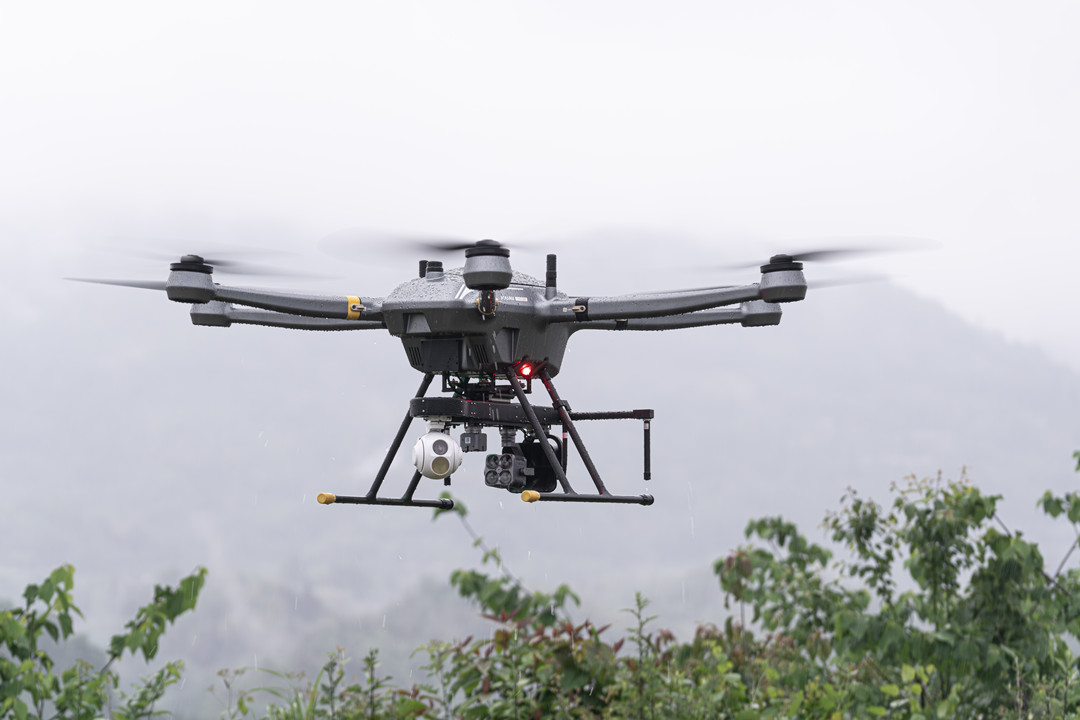
Large/Heavy-Lift Drones
Once you exceed a 5 kg payload, you enter large or heavy-lift territory. Standard large drones may handle 5–30 kg (11–66.1 lbs), while true heavy-lift platforms often begin around 20–25 kg and can top out at 70 kg—or, in specialized industrial designs, over 200 kg.
These powerful airframes are engineered for demanding missions: carrying construction materials to remote sites, transporting cargo, mounting high-end cinema cameras, and performing heavy-duty agricultural spraying or emergency relief deliveries.
Their substantial payload capacity makes them critical assets wherever robust lifting power and long-range endurance are required.
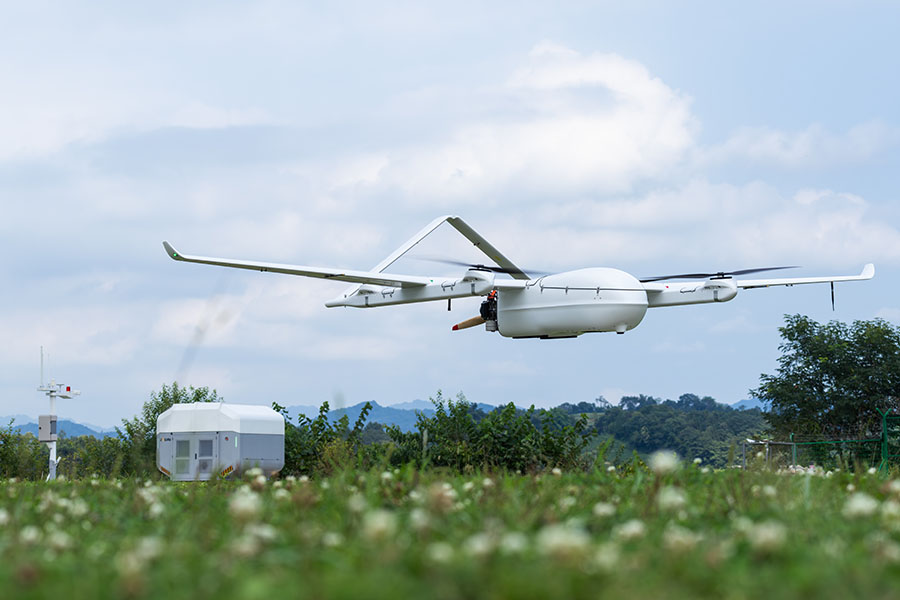
How to Calculate Payload Capacity for Your Drone?
Calculating a drone’s payload capacity is crucial for safe, efficient flight. Overloading a drone can dramatically reduce its performance and even lead to crashes.
Thrust-to-Weight Ratio (TWR)
At its core, a drone's ability to carry weight is governed by the thrust-to-weight ratio (TWR). This ratio, calculated as TWR = Total Thrust / Total Weight, determines if a drone can lift off and how well it performs with additional loads. Total weight includes the drone's empty weight plus the payload.
- TWR = 1.0: The drone can theoretically hover in a vacuum with zero wind, but is difficult to maintain in real-world conditions.
- TWR > 1.0: The drone can lift off, representing a basic capability for flight.
- TWR = 1.1–1.3: Flight is possible but may be unstable, with limited capacity for maneuvering or handling wind.
- TWR ≥ 2.0: This range is considered ideal for stable flight, enabling payload carrying and agility. Many consumer drones like the DJI Mavic fall within this range (2.0–3.0).
- TWR > 3.0: Common in racing drones or heavy-lift drones, like the Freefly Alta 8, for high speed or significant payload capacity.
For instance, a drone with 1,000 g of thrust and 500 g of weight has a 2:1 ratio, meaning it could hover at 50% throttle and still have headroom for maneuvers. Pilots commonly target about a 2:1 TWR, which strikes a balance between power and efficiency.
A 1:1 drone feels sluggish, while very high ratios are "nimble" but waste energy. In short, higher TWR lets a drone carry more weight safely; for a 2:1 ratio you plan on roughly double the hover thrust for takeoff and maneuvering.
To accurately determine payload capacity, follow these steps:
Step 1: Determine the Drone's Basic Weight
First, find your drone’s unloaded weight. This includes the frame, motors, propellers, battery, electronics (flight controller, ESCs, etc.), cameras, and any attached gear. You can weigh each part or rely on specs to sum the total "dry" mass (in kilograms).
For example, a heavy-lift hexacopter might have dozens of kilograms in just its frame and batteries. Be thorough: include everything on the drone itself, but exclude the new payload you intend to carry. For the most accurate data, refer to the manufacturer's specifications.
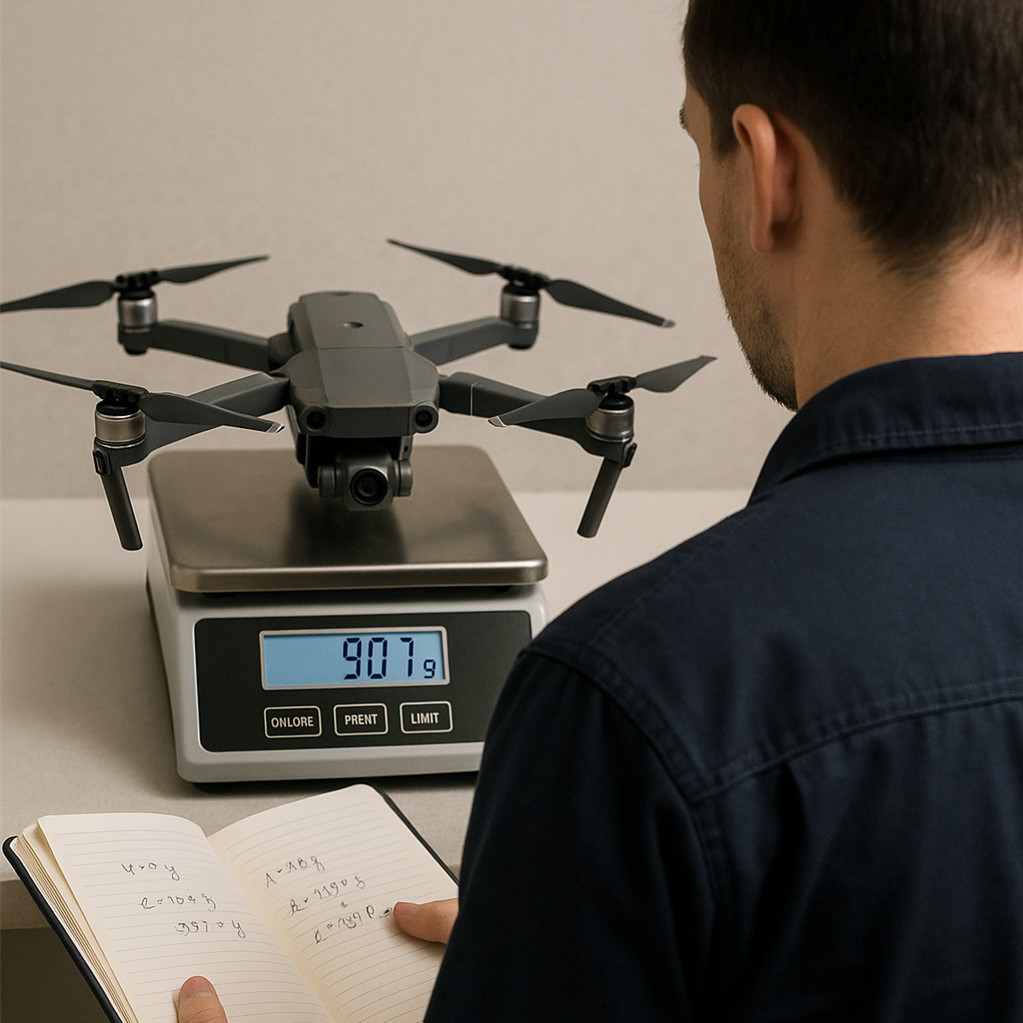
Step 2: Calculate the Required Thrust
Calculate the thrust needed to lift and maneuver the drone with its intended payload. The minimum thrust for hovering is:
Min. Thrust = Total Weight (Drone + Payload) × Gravity (9.81 m/s²).
For stable flight, takeoff, and maneuvering, a safety factor is crucial. A common target is a 2:1 thrust-to-weight ratio. This means the propulsion system should produce twice the thrust needed for hovering at maximum intended weight. Formula:
Total Required Thrust = Total Weight × Gravity × Safety Factor ( For stability, multiply by 2).
Example: For a drone weighing 15 kg with a 5 kg payload, the total mass is 20 kg. First, calculate minimum thrust: 20 kg × 9.81 ≈ 184 N (approximately 19 kgf of force). For a 2:1 thrust-to-weight ratio, we double that: 368 N (≈38 kgf) of thrust total. With four motors, each must provide about 92 N (≈ 9 kgf) of thrust.
In practice, we'd select motors and propellers rated to exceed 9 kgf each. This ensures the drone can hover and climb even with the extra load. If our chosen setup can't reach 9 kgf per rotor, we'd have to lighten the payload or use larger props/more powerful motors.
Step 3: Evaluate Your Drone's Propulsion System
Now, check whether your motors and propellers can actually deliver the required thrust. There are several practical methods:
- Manufacturer's Data: Refer to motor and propeller specifications for static thrust ratings.
- Thrust Stand Testing: Conduct physical tests using specialized equipment like Tyto Robotics thrust stands to directly measure thrust under controlled conditions.
- Online Calculators: Use propeller thrust calculators from manufacturers like Mejzlik to estimate static and dynamic thrust based on parameters like diameter, pitch, KV rating, and voltage. Remember, total thrust for a multirotor is the sum of thrust from each motor.
In any case, confirm that each rotor can produce the necessary thrust; if not, reduce your payload or upgrade the motors/props.
Step 4: Estimate Flight Time Impact
Finally, consider how the extra weight will affect flight time. Heavier payloads require higher thrust and thus more power from the battery. In simple terms, more weight = more energy use = shorter flight.
When you add mass, the motors must spin faster (higher RPM) to provide the extra lift, which draws more current. As one study notes, overcoming increased weight requires more thrust and therefore "higher RPM" and power draw, which in turn decreases available battery life and flight time.
For example, carrying a 5 kg box on a 35 kg drone might cut endurance by a noticeable fraction. You can estimate the effect with flight-time calculators: input your battery capacity (in watt-hours), motor efficiency, and total lift requirement to predict how long you can hover.
Recommended Tools and Calculators
Several online tools can streamline these calculations. For thrust-to-weight, FlyEye’s TWR calculator lets you enter total thrust and weight to get the ratio and interpret its meaning.
There are also flight-time calculators (for example, the Omni Calculator drone flight time tool or eCalc’s multicopter simulator) that estimate endurance based on battery watt-hours, motor power, and payload.
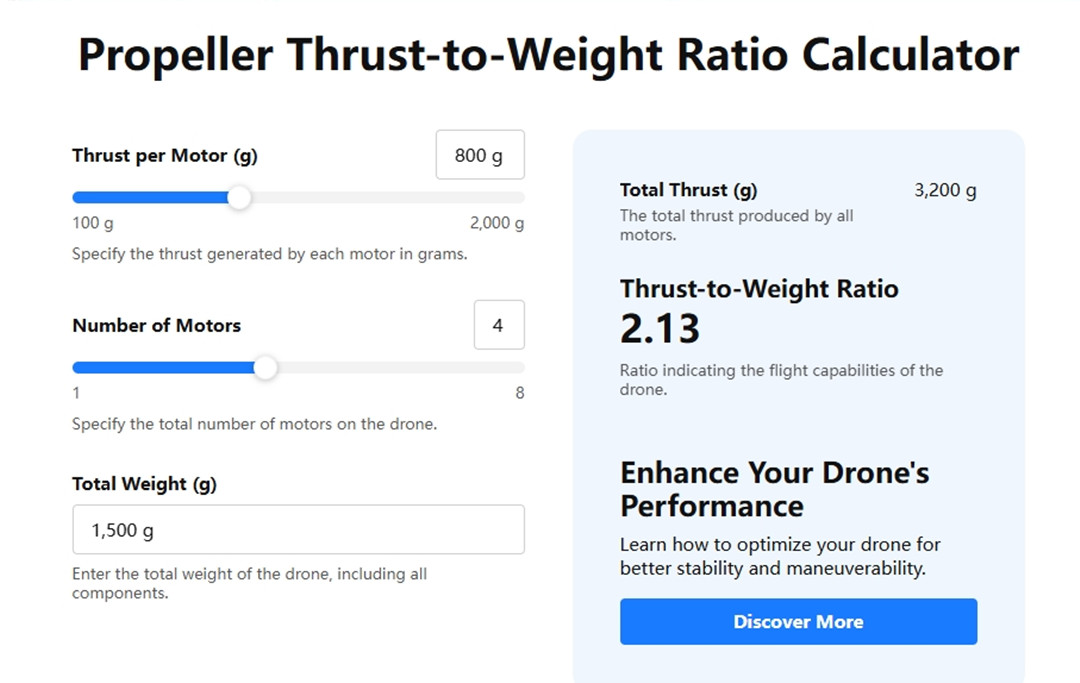
FlyEye’s Thrust-to-Weight Ratio Calculator for Drones. Image credit: flyeye.io
To analyze props, FlyEye’s Propeller Efficiency Calculator shows how blade diameter and pitch affect lift and power draw (noting that larger blades create more thrust but demand more power). Some prop makers (e.g., Mejzlik, T-Motor) provide static thrust or torque calculators on their websites.
Finally, the Tyto Robotics test database is a free resource listing actual thrust data for many motor/prop setups. By cross-checking your manual calculations with these tools, you can be more confident in your design before launching the drone.
How to Increase Drone Payload Capacity?
To increase your drone's payload capacity, you'll need to consider both hardware upgrades and operational adjustments.
Optimize Propulsion Systems
The propulsion system—motors, propellers, and ESCs—is the cornerstone of thrust generation. High-torque brushless motors, such as the T-MOTOR U15II, paired with large-diameter carbon fiber propellers, can boost lift by up to 30%.
For instance, upgrading from 12-inch to 15-inch propellers enhances thrust exponentially due to increased air displacement. Counter-rotating motor setups further improve stability and efficiency by neutralizing torque effects. Electronic Speed Controllers (ESCs) must match motor specifications to ensure seamless power delivery, minimizing energy loss during heavy loads.
Reduce Structural Weight
Every gram saved on the drone’s frame directly increases payload potential. Carbon fiber, with its unmatched strength-to-weight ratio, replaces bulkier materials like aluminum in critical components such as arms and gimbals.
Titanium fasteners and 3D-printed nylon mounts further trim weight while maintaining durability. Advanced manufacturing techniques, like laser sintering, enable intricate designs that reduce material use without sacrificing structural integrity. For example, a carbon fiber frame can save 40% of weight compared to aluminum, freeing capacity for payload.
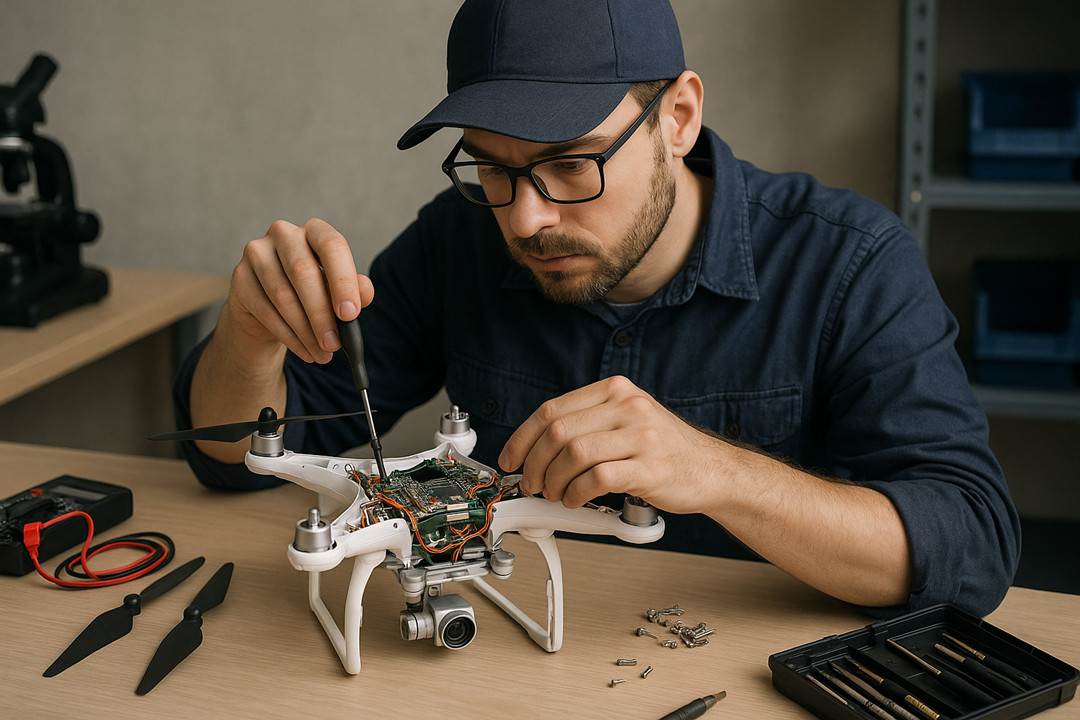
Upgrade Power Systems
Battery energy density dictates how much power is available for lifting. Lithium High Voltage (LiHV) and solid-state batteries offer 15–30% higher energy density than standard LiPo, extending flight time under load.
Hybrid systems, combining electric motors with fuel engines, are emerging for heavy-lift applications, enabling payloads over 100 lbs with multi-hour endurance. For instance, the T-DRONES ARES utilizes solid-state batteries to achieve 320 Wh/kg, optimizing the balance between weight and power.
Enhance Aerodynamics
Streamlined designs and ducted fan systems reduce drag, reserving motor power for payload. Retractable landing gear and enclosed electronics cut air resistance by 15%, while aerodynamic payload housings align cargo with airflow.
Ducted fans, like those in the Wingcopter 198, not only protect propellers but also boost thrust efficiency by 20% through optimized rotor-duct interactions. Ensuring a 2–3% tip gap in ducted systems stabilizes airflow, maximizing lift.
Balance Design Trade-offs
Increasing payload often involves trade-offs with flight time, speed, and cost. A multi-objective approach is critical: high-energy batteries may add weight, but their efficiency gains offset this.
Strategic mission planning—such as splitting heavy payloads into smaller trips or optimizing flight paths—can mitigate these trade-offs. For example, SiFly Aviation’s Q250 leverages autonomous routing to reduce energy consumption, effectively extending usable payload capacity.
Validate with Rigorous Testing
Theoretical models must be validated through empirical testing. Thrust stands, like the RCBenchmark Series 1585, measure real-world motor and propeller performance under load, while flight telemetry data identifies inefficiencies.
Iterative design loops—combining computational tools and physical trials—refine components for peak synergy. Regular analysis of battery drain and motor heat ensures sustained performance.
How Much Weight Can a Drone Carry? Legal and Safety Considerations
The maximum weight a drone can legally carry isn't just a matter of engineering limits—it’s tightly controlled by aviation regulations that vary by country.
United States (FAA)
In the U.S., the FAA enforces drone weight restrictions primarily under Part 107, which covers small UAS operations:
- Registration: All drones over 250g must be registered. Drones above 55 pounds (25 kg) are subject to a special paper-based registration and cannot operate under Part 107.
- Commercial Use: For drones under 55 pounds (including payload), operators may fly under Part 107 with certain limitations (e.g., visual line-of-sight, altitude, and speed).
- Drones Over 55 Pounds: Require special exemptions (Section 44807) or a Special Airworthiness Certificate, along with a remote pilot certificate and a 3rd class medical certificate.
- Operations Over People: Subject to kinetic energy thresholds—drones with higher impact risk may fall into restricted categories, limiting their size and payload.
- Cargo and Dangerous Goods: Part 107 prohibits transporting dangerous goods. For beyond visual line of sight (BVLOS) or compensated cargo delivery, operators must follow Part 135, which includes extensive certification and safety programs
European Union (EASA)
The EASA framework applies across all EU member states, using risk-based categories that indirectly control payload capabilities:
- Open Category: For drones up to 25 kg MTOM (Maximum Take-Off Mass). They must fly within visual line-of-sight (VLOS) and are not allowed to carry dangerous goods or drop materials.
- Specific Category: Allows drones with heavier payloads or higher-risk operations. Requires a risk assessment and approval from national authorities.
- Certified Category: For high-risk tasks, including heavy-lift or hazardous cargo, requiring full certification of the drone, pilot, and operator—similar to manned aircraft rules.
C-class labels (C0–C4) define operational limits for open category drones, including takeoff mass, safety features, and pilot training levels.
United Kingdom (CAA)
The UK CAA regulations mirror much of the EASA framework:
- Open Category: Covers drones under 25 kg. Payloads must not include dangerous goods or any dropped items.
- Specific Category (PDRA01): Allows operations with drones between 250g–25kg in populated areas, but still bans dangerous cargo or dropping articles.
- Certification: Drones without C-class markings and heavier drones may require operational authorizations based on the area, weight, and intent of use.
Canada (Transport Canada)
Canada classifies drones based on take-off weight (including payload):
- Micro (<250g): Exempt from most rules but can't carry commercial payloads.
- Small (250 g–25 kg): Require pilot certification; payload weight contributes to the total MTOM.
- Medium (25–150kg): Need special authorization for use; often used in industrial or research settings.
- Large (>150kg): Require case-by-case approval, with regulations approaching those for manned aviation.
Basic and advanced operations dictate how close drones may fly to people and in controlled airspace, impacting how and where drones with heavy payloads can be used.
Australia (CASA)
Australia’s CASA regulations define drone categories by weight, which includes any payload:
- Micro (≤250g) and Very Small (>250g–2kg): For commercial use, pilots need to notify CASA or obtain a remote pilot license, depending on the activity.
- Small (2 kg–25 kg): Require an operator accreditation or remote pilot license with a ReOC (Remotely Piloted Aircraft Operator's Certificate) for business use.
- Medium (>25 kg–150 kg): Must operate under a ReOC and need explicit CASA approval for flight operations.
- Payload Limits: As with other countries, payload is factored into MTOM and must comply with certified limits and airspace restrictions.
Consequences of Non-Compliance
Non-compliance with drone regulations carries significant penalties across all jurisdictions. These can include substantial civil and criminal fines, legal action, suspension or revocation of remote pilot certificates, drone confiscation, and operational bans.
For instance, in the U.S., civil penalties can reach up to $341,413 for violations of Part 107, with criminal penalties potentially including fines up to $250,000 and imprisonment for up to three years for willful or reckless disregard for safety.
FAQ
What Happens if I Overload My Drone?
Overloading a drone leads to:
- Motor/ESC Overheating: Excessive strain can cause motor burnout or ESC failure.
- Reduced Flight Time: Batteries drain faster due to higher power demand.
- Instability: Difficulty maintaining hover, leading to crashes.
- Structural Damage: Arms or frames may crack under stress.
- Legal/Safety Risks: Crashes risk property damage, injuries, and regulatory penalties.
What Drone Can Lift 1,000 Pounds?
Drones capable of lifting 1,000 pounds (approximately 453 kg) or more are typically in the category of "giant drones" or highly specialized heavy-lift platforms, often with military or industrial applications.
Military platforms like the MQ-9 Reaper have a max takeoff weight of 10,500 lbs (4,760 kg), and the Northrop Grumman RQ-4 Global Hawk weighs approximately 32,250 lbs (14,628 kg).
How Much Weight Can a 7-Inch Drone Carry?
A 7-inch drone refers to the propeller size, commonly found in larger FPV or freestyle drones. These drones are built for speed and agility, not for carrying heavy loads.
Depending on the motor and battery setup, a 7-inch drone can typically carry between 500 to 800 grams. While some builds may support a bit more, adding too much weight severely impacts flight stability and battery life.
What If My Drone Weights More Than 250g?
If your drone weighs more than 250 grams (approximately 0.55 pounds), it typically triggers specific registration, licensing, and operational requirements depending on the country you are flying in.
In the United States, all drones weighing more than 250 grams (0.55 lbs) must be registered with the FAA. This costs $5 and is valid for 3 years. Drones weighing less than 250 grams are exempt if flown under the Exception for Limited Recreational Operations.
What is the Largest Drone You Can Fly?
These are the largest drones generally accessible for commercial and industrial applications.
- Griff Aviation 300: This is one of the largest commercially available heavy-lift drones, capable of carrying a 227 kg (500-pound) payload. It weighs approximately 145 pounds (65.7 kg).
- SiFly Q250: This is a 250 kg (550-lb) heavy-lift drone that can carry 200-pound payloads.
- Other large commercial drones include the DJI FlyCart 30 (30 kg / 66 lbs payload) , JOUAV CW-80E (25 kg / 55 lbs payload) , and Freefly Alta X (16 kg / 35 lbs payload).
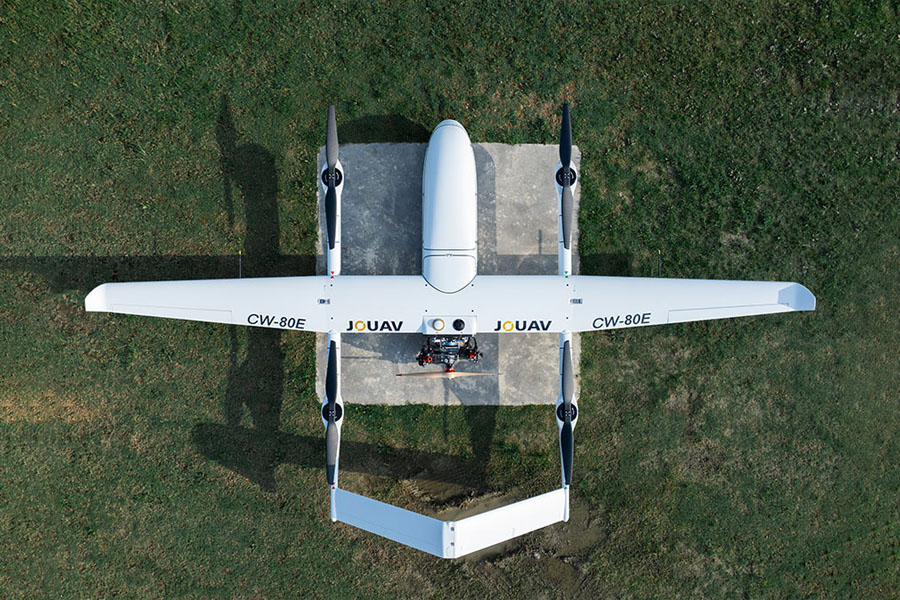
How Much Extra Weight Can a Drone Carry?
The amount of extra weight a drone can carry is usually 25 to 50 percent of its own weight, depending on its power system and design. For instance, a drone that weighs 4 pounds might be able to lift 1 or 2 pounds of payload.
What is the Weight Limit for a Large Drone?
The amount of extra weight a drone can carry is usually 25% to 50% of its own weight, depending on its power system and design.
For instance, a drone that weighs 4 pounds might be able to lift 1 or 2 pounds of payload.
However, increasing the payload reduces flight time and can make the drone less responsive and harder to control. Always stay within the manufacturer’s recommended payload limits to avoid mechanical stress or accidents.
What is the Largest Drone You Can Fly without a License?
In the United States, you can fly drones weighing 250 grams (0.55 pounds) or less without registration or a pilot certificate, provided they are flown under the Exception for Limited Recreational Operations.
What License Do I Need to fly a drone over 55 lbs?
In the United States, flying a drone weighing 55 pounds or more cannot be operated under the standard Part 107 rules. Instead, you must obtain special authorization from the FAA.
- Applying for an exemption under Section 44807 (formerly Section 333).
- Applying for a Special Airworthiness Certificate. If granted, these exemptions usually last for 24 months.
Pilots operating drones over 55 lbs must obtain a Remote Pilot Certificate and a 3rd class medical certificate.
How Does Payload Weight Affect Flight Time?
Payload weight has a direct and significant impact on a drone's flight time. The relationship is inverse: as payload weight increases, flight time decreases.
Here's a detailed explanation of why:
- Increased Thrust Requirement: To lift a heavier payload, the drone's motors and propellers must generate more thrust to overcome the increased total weight (drone's own weight + payload). When a drone is hovering, the thrust produced is equal to its total weight. To lift more weight, this required thrust increases.
- Higher RPMs: To generate this increased thrust with the same propellers, the motors must spin at higher revolutions per minute (RPMs).
- Increased Power Draw: Higher RPMs directly translate to a greater power draw from the drone's battery. The more power consumed, the faster the battery depletes.
- Reduced Battery Life and Flight Time: This accelerated energy consumption inevitably leads to a shorter available battery life and, consequently, a reduced overall flight time.
There is an inherent trade-off between the amount of payload a drone can carry and the duration it can remain in flight. While a larger battery might offer more energy, its increased mass could reduce the effective payload capacity or demand even more thrust, potentially negating some efficiency gains.
How Much Can a Fixed-Wing Drone Carry?
Fixed-wing drones generally have stronger structures to support bulkier payloads compared to multirotor drones, and they are often ideal for long-range missions like mapping and surveying.
Here are examples of payload capacities for various fixed-wing drones:
- JOUAV CW-80E: This hybrid VTOL fixed-wing drone is designed for extended flight times and versatility, with a payload capacity of 25 kg (55 lbs). It is used for applications like pipeline inspection and long-range cargo delivery.
- Quantum Systems Trinity Pro: This VTOL drone, used for long-range mapping and delivery, has a max payload of 1.5 kg (3.3 lbs). It can carry various payloads like RGB, multispectral, and LiDAR sensors.



